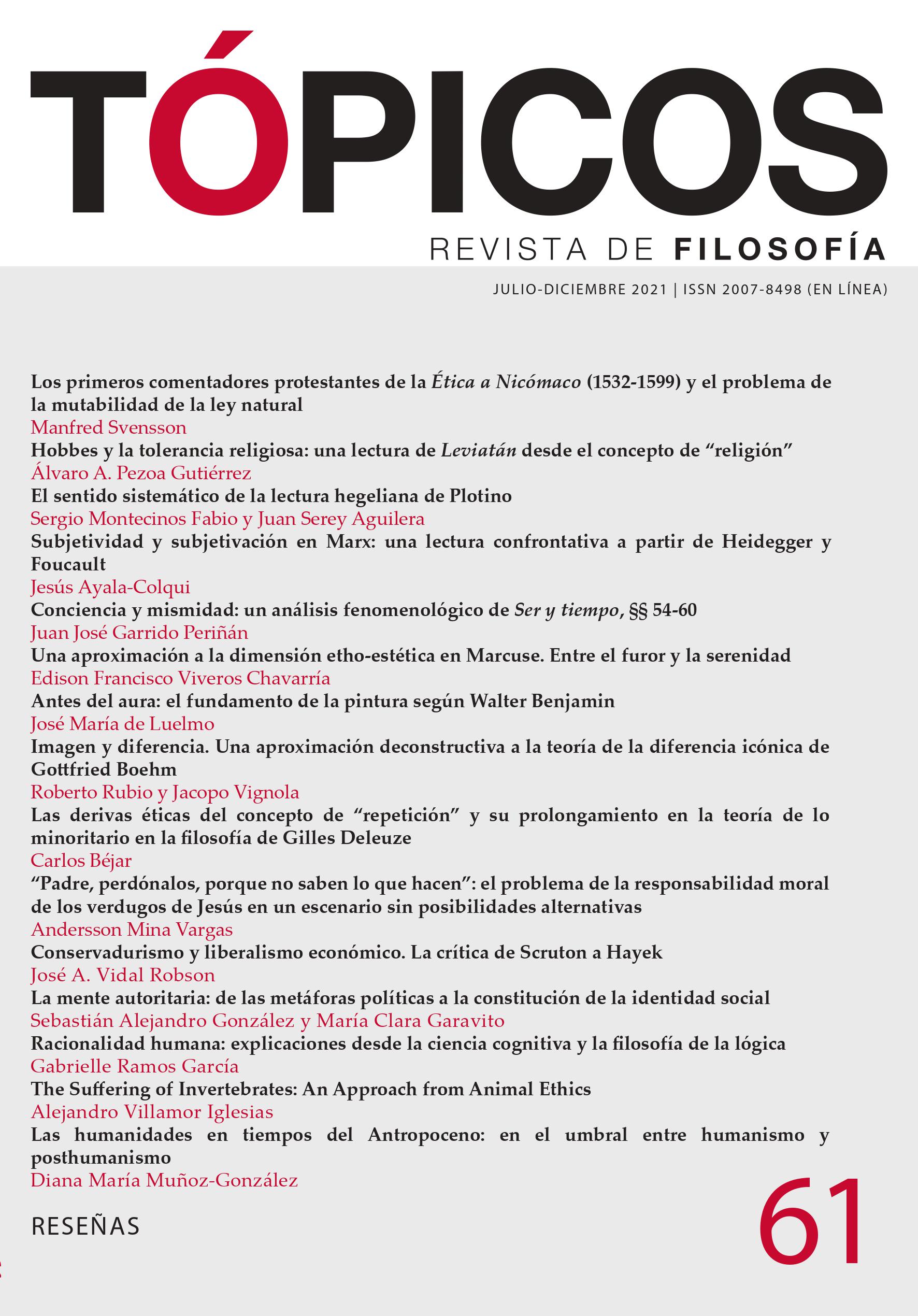Publicado 2021-06-23
Palabras clave
- Antropoceno,
- antropocentrismo,
- humanidades,
- humanismo,
- posthumanismo
- naturaleza ...Más
Derechos de autor 2021 Tópicos, Revista de Filosofía

Esta obra está bajo una licencia internacional Creative Commons Atribución-NoComercial-SinDerivadas 4.0.
Cómo citar
Resumen
Frente al anuncio del Antropoceno como la nueva era geológica en la que el ser humano ha llegado a convertirse en la principal fuerza telúrica del planeta, las humanidades se ven claramente solicitadas. Ellas deben revisar a fondo la concepción usual del ser humano definido a partir de su distinción esencial frente a la naturaleza. En esa tarea se les ofrecen dos caminos a seguir: uno conserva premisas fundamentales de la tradición humanista, mientras el otro busca separarse de dicha tradición y abrirse a un nuevo paradigma de pensamiento posthumanista. Este artículo contrasta ambos enfoques, preguntándose cuál de ellos da mejor cuenta del Antropoceno en cuanto evento cuya novedad invita a redefinir lo que significa ser humano.
Referencias
- Bonneuil, C. (2015). The Geological Turn. Narratives of the Anthropocene. En C. Hamilton, C. Bonneuil y F. Gemenne (eds.), The Anthropocene and the Global Environmental Crisis. Rethinking Modernity in a New Epoch. (pp. 17–31). Routledge.
- Bonneuil, C. y Fressoz, J.-B. (2016). L’Événement Anthropocène. La Terre, l’Histoire et Nous. Points.
- Cózar Escalante, J. M. (2019). El Antropoceno. Tecnología, naturaleza y condición humana. Catarata.
- Crist, E. (2016). On the Poverty of Our Nomenclature. En J. Moore (ed.), Anthropocene or Capitalocene? Nature, History, and the Crisis of Capitalism. (pp. 14 – 33). PM Press.
- Descola, P. (2014). The Great Divide. En Beyond Nature and Culture. (pp. 57–89). Chicago University Press. Derrida, J. (2006). Et si l’animal répondait ? En L’animal que donc je suis. (pp. 163-191) Galilée.
- De Waal, F. (2016). ¿Tenemos suficiente inteligencia para entender la inteligencia de los animales? A. García Leal (trad.). Tusquets.
- Diamond, C. (2008). The Difficulty of Reality and the Difficulty of Thought. En S. Cavell (ed.), Philosophy and Animal Life. (pp. 43-89). Columbia University Press.
- Haraway, D. (1995) Ciencia, cyborgs y mujeres. La reinvención de la naturaleza. M. Talens (trad.). Cátedra.
- Haraway, D. (2016). Staying with the Trouble: Anthropocene, Capitalocene, Chthulecene. En J. Moore (ed.), Anthropocene or Capitalocene? Nature, History, and the Crisis of Capitalism. (pp. 34–76). PM Press.
- Heidegger, M. (2007). El animal es pobre de mundo. En Los conceptos fundamentales de la metafísica. Mundo, finitud, soledad. (pp. 235–250). J. A. Ciria Cosculluela (trad.). Alianza.
- Latour, B. (2015). Face à Gaia. Huit conférences sur le nouveau régime climatique. La Découverte.
- Maris, V. (2015). Back to the Holocene. En C. Hamilton, C. Bonneuil y F. Gemenne (eds.), The Anthropocene and the Global Environmental Crisis. (pp. 123-133). Routledge.
- Neyrat, F. (2016). La part inconstructible de la Terre. Critique du géoconstructivisme. Seuil.
- Raffnsøe, S. (2016). Philosophy of the Anthropocene. The Human Turn. Palgrave Mac Millan.
- Tavares, G. (2007). Aprender a rezar na Era da Tecnica. Posiçao no mundo de Lenz Buchmann. Editorial Caminho.





